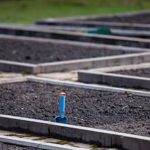Are you interested in starting your own raised bed vegetable gardening on pallets? Raised bed gardening has a long history, with the practice dating back to ancient times. In this article, we will explore the benefits of raised bed vegetable gardening on pallets and provide a comprehensive guide to help you get started.
Raised bed gardening offers numerous advantages, including improved drainage, better soil quality, and easier maintenance. By using pallets as the foundation for your raised beds, you can repurpose materials and create a sustainable garden space. Whether you are a seasoned gardener or just getting started, this method is a great way to maximize your harvest in limited space.
In the following sections, we will discuss choosing the right pallets for your garden, preparation and construction tips, soil selection and drainage considerations, planting and maintenance guidelines, pest and disease management strategies, harvesting tips, as well as success stories and community inspiration. So if you’re ready to roll up your sleeves and start your own raised bed vegetable garden on pallets, keep reading for all the information you need to get started.
Choosing the Right Pallets
When it comes to raised bed vegetable gardening on pallets, choosing the right pallets is essential for the success of your garden. Not all pallets are suitable for gardening, so it’s important to be selective in your choices. Look for pallets that are made from untreated wood, as you don’t want any harmful chemicals leaching into your soil and affecting the quality of your vegetables.
One option to consider is using heat-treated pallets, which are marked with an “HT” stamp. These pallets have been heated to a high temperature to kill off any insects or pathogens, making them safe for use in gardening. Another consideration is finding pallets with wide slats and good spacing between boards, as this will allow for proper drainage and aeration of the soil.
Sourcing the best pallets for your raised bed can be done in a variety of ways. Many businesses are willing to give away unwanted pallets for free, so consider reaching out to local hardware stores, garden centers, or even online classified ads. Just be sure to ask about the history of the pallet and avoid any that may have been used to transport hazardous materials.
| Pallet Type | Considerations |
|---|---|
| Heat-treated (HT) Pallets | Safe for gardening, marked with “HT” stamp |
| Untreated Wood Pallets | Avoid harmful chemicals leaching into soil |
| Wide Slats and Good Spacing | Allows for proper drainage and aeration |
By carefully selecting the right pallets for your raised bed vegetable gardening project, you’ll be setting a strong foundation for a successful and thriving garden. With the right materials in place, you can move on to preparing and constructing your raised bed without worry about potential issues arising from poor-quality pallets.
Preparation and Construction
Step-by-Step Guide on How to Prepare the Pallets for Gardening
Before starting your raised bed vegetable gardening on pallets, it is essential to properly prepare the pallets to ensure a successful garden. The first step is to carefully inspect the pallets for any damage or signs of contamination. It is crucial to choose untreated pallets that have not been chemically treated as these can leach harmful substances into the soil, affecting the health of your plants.
Once you have selected your pallets, you will need to remove any existing nails or staples from the wood to prevent potential injury during construction. After this, sanding down the rough edges and surfaces of the pallets will help create a smoother and safer surface for handling and planting. Additionally, consider applying a non-toxic sealant or paint to further protect the wood from weathering and moisture.
Instructions on Assembling the Pallets Into a Raised Bed
After preparing the pallets, it is time to assemble them into a raised bed structure. One popular method is to stack two or more pallets on top of each other to achieve the desired height for your garden. Secure the stacked pallets together with screws or brackets to create a sturdy frame. Another approach is to stand the pallet up vertically and secure it in place before filling it with soil, creating a striking vertical garden design.
When assembling your raised bed, make sure there are no gaps between the boards where soil could escape. You may consider lining the inside of your pallet structure with landscaping fabric or plastic sheeting as an added precaution before filling it with soil. Once assembled, fill your raised bed with quality soil suitable for growing vegetables, ensuring even distribution across all compartments of your pallet structure.
By following these preparation and construction steps, you will be on your way to creating a thriving raised bed vegetable garden on pallets that will provide an abundance of fresh produce throughout the growing season.
Soil and Drainage
Choosing the right soil and ensuring proper drainage are crucial steps in the success of raised bed vegetable gardening on pallets. Here are some tips to ensure that your plants have the best growing conditions:
- Choosing the Right Soil
- Proper Drainage
- Maintenance
When it comes to choosing soil for your raised bed, it’s important to opt for a high-quality, well-draining mix. Look for a mixture that contains a balance of nutrients and organic matter to support healthy plant growth. Consider using a combination of topsoil, compost, and other organic materials to create a nutrient-rich environment for your vegetables.
Proper drainage is essential for preventing waterlogged soil, which can lead to root rot and other issues with plant health. When constructing your raised bed on pallets, make sure to create adequate drainage by drilling holes in the bottom of the pallet or adding gravel or rocks before adding the soil. This will allow excess water to drain away from the roots of your plants, promoting healthy growth.
Regular maintenance of your raised bed garden includes monitoring the moisture level and making sure that excess water does not accumulate in the soil. Additionally, consider adding mulch on top of the soil to help maintain moisture levels and prevent erosion.
By paying attention to these important factors, you can set up your raised bed vegetable garden on pallets for success and enjoy a bountiful harvest of fresh produce throughout the growing season.
Planting and Maintenance
Planting vegetables in a raised bed garden on pallets can be an exciting and rewarding experience. Not only are you providing a healthy environment for your vegetables to grow, but you are also repurposing materials and reducing waste. When choosing what vegetables to plant, it’s essential to consider the size of your raised bed and the amount of sunlight it receives.
Best Vegetables for Raised Bed Gardening
Some of the best vegetables to grow in a raised bed include tomatoes, peppers, lettuce, carrots, and radishes. These vegetables do well in the confined space of a raised bed and are relatively easy to maintain. Additionally, they thrive in the nutrient-rich soil typically found in raised beds.
When planning your garden, be sure to consider companion planting. This involves growing certain plants together to enhance their growth and productivity while deterring pests. For example, planting basil alongside tomatoes not only enhances the flavor of the tomatoes but also repels insects that may harm them.
Maintenance Tips
Once your vegetables are planted, it’s crucial to provide them with proper care and maintenance. This includes regular watering, weeding, and fertilizing as needed. Be sure to monitor the growth of your plants and make adjustments as necessary.
In addition to basic care, it’s important to support climbing plants such as tomatoes or cucumbers with trellises or stakes within the raised bed. This will help prevent overcrowding and allow for better airflow around the plants.
By following these planting and maintenance tips, you can ensure a successful vegetable garden in your raised bed on pallets. It’s important to stay engaged with your garden throughout the growing season and remain attentive to any changes or issues that may arise.
Pest and Disease Management
When it comes to raised bed vegetable gardening on pallets, one of the key challenges that gardeners may face is pest and disease management. However, with the right strategies and techniques, it is possible to prevent and manage common issues without the use of harmful chemicals. Here are some tips for maintaining a healthy garden:
1. Companion planting: One effective way to naturally deter pests is by utilizing companion planting. By growing certain plants together, you can create a natural barrier against pests and reduce the risk of infestation. For example, planting basil alongside tomatoes can help repel insects like aphids and hornworms.
2. Proper spacing: Ensuring adequate spacing between plants in your raised bed can help improve air circulation and minimize the risk of disease. Good airflow can also make it more difficult for pests to thrive and reproduce.
3. Natural remedies: If pest or disease issues arise, there are many natural remedies that can be used for control. For example, spraying a mixture of neem oil and water can help combat common garden pests like aphids, whiteflies, and spider mites without harming beneficial insects.
In addition to these proactive measures, it’s also important to regularly inspect your raised bed garden for any signs of trouble. By staying vigilant and addressing issues promptly, you can enjoy a bountiful harvest from your pallet garden while minimizing the need for chemical interventions.
Harvesting and Yield
Planting and maintaining a raised bed vegetable garden on pallets can be an incredibly rewarding experience, and the ultimate goal of all your hard work is, of course, a bountiful harvest. When it comes to harvesting and maximizing yield from your pallet garden, there are a few key tips to keep in mind.
First and foremost, it’s important to familiarize yourself with the specific growing seasons for the vegetables you have chosen to plant. Understanding when each crop is expected to reach maturity will help you plan your harvesting schedule accordingly. This will also allow you to make the most of your garden space by planting new crops as others are harvested, extending your growing season and overall yield.
Another vital aspect of maximizing yield in your raised bed vegetable gardening on pallets is proper maintenance and care throughout the growing season. Regular weeding, watering, and fertilizing will ensure that your plants have everything they need to thrive and produce an abundant harvest. Additionally, keeping an eye out for any signs of pest infestations or disease can help you address issues before they significantly impact your yield.
In addition to these general practices for optimizing harvests from a raised bed garden on pallets, there are also techniques specific to certain types of vegetables that can help increase yields. For example, regularly pruning certain types of plants can encourage them to produce more fruits or vegetables. Intercropping-planting compatible crops in close proximity-can also help maximize space usage and ultimately improve overall yields.
| Vegetable | Optimal Harvest Time |
|---|---|
| Tomatoes | Late summer/early fall |
| Carrots | When shoulders become visible above ground level |
| Lettuce | When leaves are large enough to eat but before they turn bitter |
Success Stories and Community Inspiration
Raised bed vegetable gardening on pallets has gained popularity in recent years, with many individuals and communities finding success with this innovative gardening method. One of the key benefits of using pallets for raised bed gardening is the accessibility and affordability of materials, making it an ideal option for both urban and rural gardeners alike.
Additionally, using pallets for raised beds can also help repurpose materials that would otherwise go to waste, adding an eco-friendly element to your gardening efforts.
There are numerous success stories from individuals and communities who have embraced raised bed vegetable gardening on pallets. In urban areas where space is limited, community gardens have utilized pallets to create raised beds for growing fresh produce.
These initiatives not only provide a sustainable source of food but also foster a sense of community and collaboration among participants. Moreover, individuals who may have previously been unable to garden due to physical limitations or lack of space have found new opportunities through this method.
In addition to success stories, the gardening community has provided a wealth of inspiration and tips for beginners looking to start their own raised bed vegetable garden on pallets. Online forums and social media groups are filled with shared experiences, troubleshooting advice, and creative ideas for maximizing yields in a limited space.
This sense of community support can be invaluable for those new to raised bed gardening or looking to expand their knowledge and skills in this area. Through these shared experiences and inspirational stories, more people are encouraged to take the first step in starting their own raised bed garden on pallets.
Conclusion and Next Steps
In conclusion, raised bed vegetable gardening on pallets offers numerous benefits for both experienced gardeners and beginners. The use of pallets allows for easy construction, better drainage, and reduced strain on the gardener’s back. By following the steps outlined in this article, anyone can create a flourishing garden in a small space with minimal investment.
As you embark on your own raised bed gardening journey, it’s important to remember the key factors that contribute to success: choosing the right pallets, preparing and assembling them properly, selecting the best soil and ensuring proper drainage, planting the right vegetables, and implementing pest and disease management strategies. By paying attention to these details and staying committed to ongoing maintenance, you can expect a bountiful harvest from your raised bed garden.
So why not take the next step and join the community of raised bed vegetable gardeners? Whether you have a green thumb or are just beginning to explore the world of gardening, growing your own vegetables can be rewarding and fulfilling. Start by sourcing your pallets, preparing your soil, choosing your favorite vegetables to grow, and don’t forget to share your progress with others in the gardening community.
Together, we can inspire one another with our success stories and continue to learn from each other’s experiences in this wonderful hobby. Happy gardening.
Frequently Asked Questions
Can You Use Pallets to Make Raised Beds?
Yes, pallets can be used to make raised beds for gardening. By dismantling the pallet and reconfiguring the wood, you can create a sturdy and cost-effective raised bed to grow plants.
Is It Safe to Grow Vegetables in Pallets?
It is generally safe to grow vegetables in pallets as long as the pallets are untreated or have been heat-treated instead of chemically treated. Using untreated or heat-treated pallets helps ensure that harmful chemicals don’t leach into the soil and subsequently into your vegetables.
What Vegetables Grow Well in a Pallet Garden?
Several vegetables can thrive in a pallet garden, including lettuce, herbs, radishes, carrots, spinach, and more. The key is to choose vegetables with shallow roots that don’t require a lot of depth for their root systems. Additionally, you can grow small varieties of tomatoes or peppers in larger, deeper pallets with proper support.

If you’re looking to get into vegetable gardening, or are just looking for some tips on how to make your current garden better, then you’ve come to the right place! My name is Ethel and I have been gardening for years. In this blog, I’m going to share with you some of my best tips on how to create a successful vegetable garden.





